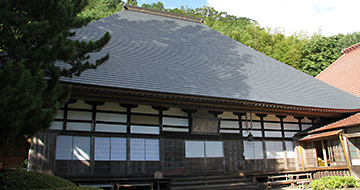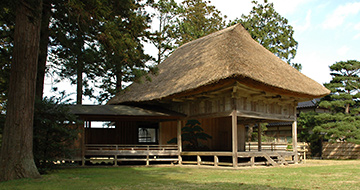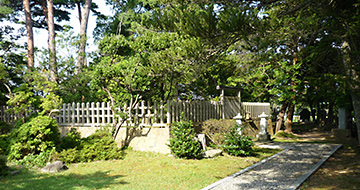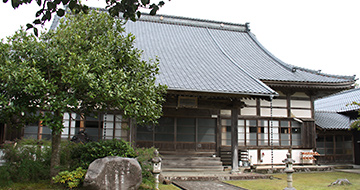- Travel to Sado Island Model Course Guide
- Visit in the footsteps of Zeami
Visit in the footsteps of Zeami
-
Departure

Ogamiyama and Megamiyama, which rise side by side in the center of Kosado, are dedicated to "Sansuke and Okiku," who are said to be the founders of rice cultivation on Sado Island. The southern slope of the mountains is known for its beautiful autumn leaves, and leads to Momijiyama Park. The park is equipped with a walking trail and an observatory where visitors can appreciate the autumn colors while strolling around. On the last Sunday of October every year, the "Momijiyama Festival" is held, featuring entertainment and autumnal events.
-
Approximately 15 minutes by carDestination B

This ancient temple, modeled after Hase Temple in Yamato, was founded by Kobo Daishi in 807. It was founded by Kobo Daishi in 807. It is also famous as a temple of flowers, including buttons. The temple owns many cultural assets that tell the story of its history, including three standing statues of the eleven-faced Kannon (a national important cultural property) by Kobo Daishi, a Kongorikishi statue from the Heian period, and Gochidō Hall. There are also Sanbon cedar and Takano maki, both natural treasures of the prefecture.
-
Approximately 12 minutes by carDestination C

Ozen Shrine sits in a rural landscape compared to the Yamato Asuka Road. Hino Shicho and Ozenbo were enshrined together by Honma Yamashiro-mori, the head of the land, and the main hall enshrines the deity Goshokuzu. When Ajinomaru, a son of Shicho, went to Sado to avenge the death of his parents, Ozenbo was executed for helping him escape. The thatched-roof Noh stage (a tangible folk cultural property of the prefecture), which was rebuilt in 1846, is one of the "four Noh stages of Kuninaka" where Teienoh (Noh plays) were performed actively. It is said to be the oldest existing Noh stage on Sado Island. Even today, dedicated Noh plays are performed during the festival on April 18, and Noh and Sagi-style Kyogen plays are performed in June.
-
Approximately 14 minutes by carDestination D

This is the ruins of the imperial palace of Emperor Juntoku, who was exiled to Sado Island after the Jokyu Rebellion of 1221. The crude palace, built of wood with bark still attached, was called Kuroki Gosho (Kuroki Palace). The present mound has been maintained since the Meiji period (1868-1912) under the leadership of Kenkichi Kawakami, a local resident. In the grounds where many pine trees grow, including the Emperor Showa's hand-planted pine, stands a monument to haiku and poems by Mokichi Saito, Hiroshi Yosano, and others.
-
Approximately 1 minute by carGoal!

Built in 1324 as a family temple of the Honma family, lords of Izumimura Castle. It is also known as Zeami's place of residence, and a stone for sitting on remains. The temple treasure, "Shintai-menbeshimi (ritual masks)," said to have been made in the late Kamakura period, is the oldest mask in the prefecture. It is said to have been used by Zeami in a dance to pray for rain. In June, "Shoboji Candle Noh Play" is held by candlelight.